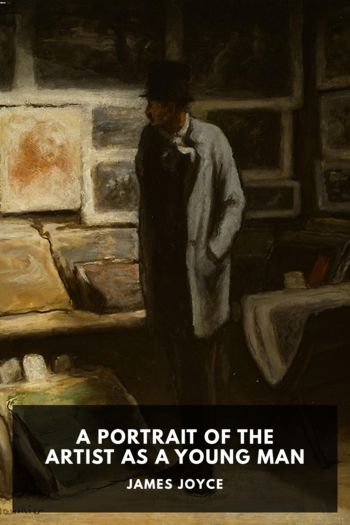
Description
A Portrait of the Artist as a Young Man is Joyce’s first novel, published after the previous success of his short story collection Dubliners. The novel is written in a modernist style, with dialog and narration blending together in a kind of stream-of-consciousness meant to invoke the blurriness of memory.
Joyce originally planned writing a realist autobiographical novel of 63 chapters titled Stephen Hero. He abandoned the attempt halfway through, and refocused his efforts on Portrait, a shorter, sharper work in the modernist style. His alter-ego remained Stephen Dedalus, named after Daedalus, the mythological Greek craftsman and father of Icarus. Portrait was written while he was waiting for Dubliners to be published, a process that took eight years and so frustrated Joyce that he once threw the manuscript of Portrait into a fire, causing his family to run to save it.
The novel closely traces Joyce’s early years. Like his alter-ego Stephen, Joyce was born into a middle-class family and lived in Dublin as they descended into poverty; he rebelled against his Irish Catholic upbringing to become a star student at Dublin University, and put aside thoughts of priesthood or medicine, the other careers offered him, to become a writer. Joyce doesn’t shy away from sensitive topics, presenting the discoveries of youth in all of their physical detail, including Stephen’s teenage visits to prostitutes (which also mirror Joyce’s youth, and were how he probably contracted the suspected syphilis that plagued his vision and tortured his health for the rest of his life), and the homosexual explorations of children at a Jesuit school.
The writing is in the free indirect style, allowing the narrator to both focus on Stephen and present characters and events through his eyes, until the last chapter, where Stephen’s first-person diary entries suggest he’s finally found his voice. As the novel progresses, the syntax and vocabulary also grow in complexity, reflecting Stephen’s own development.
Of Joyce’s three novels, Portrait is the most straightforward and accessible. But it remains just as rich and complex as any masterpiece, with critics across generations hailing it as work of unique beauty and perception.
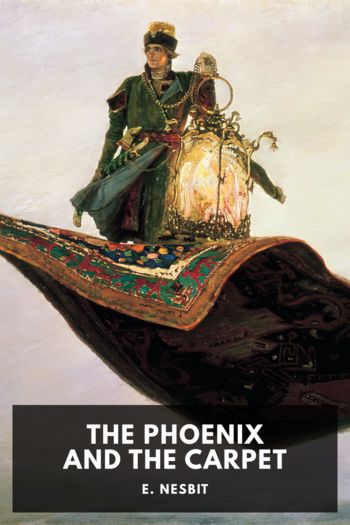
Description
Like other E. Nesbit stories, The Phoenix and the Carpet was initially published in The Strand Magazine. While The Railway Children or Five Children and It proved more popular, Phoenix has still been adapted into three BBC TV series and a film.
The story picks up some time after the events of Five Children and It. The children are back in London and encounter another ancient, magical creature: this time a noble, beautiful, arrogant, and vain Phoenix. He comes with a magic carpet which the gang uses to go on adventures around the world. Some things don’t go as planned, but there are still opportunities to make others happy.
As a female British author of children stories, E. Nesbit was not a typical early 20th century woman. Described as tomboy during her childhood, she grew up a staunch supporter of democratic socialism in a time when many were crushed under poverty. She was a founding member of the Fabian Society, and dedicated herself to charity work, so much so that she almost ended up in poverty.
Nesbit’s stories continue to fascinate readers. Her dry wit and respect with which she engages children ensures that adults can also enjoy her tales. Her depiction of magic—how it follows rules which must be taught or learned, and the painful consequences when they are forgotten—has influenced the works of other writers such as P. L. Travers, C. S. Lewis, and J. K. Rowling.
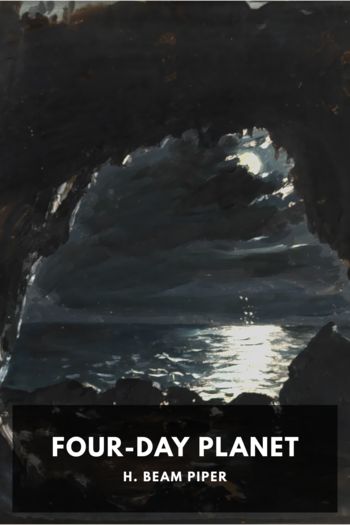
Description
Reminiscent of old whaling stories, Four-Day Planet follows the story of Walter Boyd, a scrappy 17-year-old reporter working for his father at the Port Sandor Times. Walt gets tied up in the adventures of the sea-monster hunters on Fenris—a barely-habitable planet with a 2,000-hour day. The prized—and only—commodity on Fenris is tallow-wax, a miraculous material harvested from the dangerous seas of the planet.
While being set in a grand sci-fi universe, the book packs in more about intrigue, betrayal, and the grit required to survive on a backwater planet of the Federation. The book was later re-published as a “two-for-one” with Lone Star Planet (originally titled A Planet for Texans).

Description
Montague Rhodes James was a respected scholar of medieval manuscripts and early biblical history, but he is best remembered today as a writer of ghost stories. His work has been much esteemed by later writers of horror, from H. P. Lovecraft to Steven King.
The stereotypical Jamesian ghost story involves a scholar or gentleman in a European village who, through his own curiosity, greed, or simple bad luck, has a horrifying supernatural encounter. For example, in “ ‘Oh, Whistle, and I’ll Come to You, My Lad,’ ” a professor finds himself haunted by a mysterious figure after blowing a whistle found in the ruins of a Templar church, and in “Count Magnus,” a writer’s interest in a mysterious and cruel figure leads to horrific consequences. Other stories have the scholar as an antagonist, like “Lost Hearts” and “Casting the Runes,” where study of supernatural rites gives way to practice. James’ stories find their horror in their atmosphere and mood, and strike a balance in their supernatural elements, being neither overly descriptive nor overly vague.
This collection includes all the stories from his collections Ghost Stories of an Antiquary, More Ghost Stories, A Thin Ghost and Others, and A Warning to the Curious and Other Ghost Stories.

Description
As the Civil War bears down on a small North Carolina town, a tight-knit community of enslaved men and women is preparing for the coming battle and the possibility of freedom. Into this ensemble cast of characters comes Iola Leroy, a young woman who grew up unaware of her African ancestry until she is lured back home under false pretenses and immediately enslaved. Amidst a backdrop of battlefield hospitals and clandestine prayer meetings, this quietly stouthearted novel is a story of community, integrity, and solidarity.
Frances Ellen Watkins Harper was already one of the most prominent African-American poets of the nineteenth century when—at age 67—she turned her focus to novels. Her most enduring work, Iola Leroy, was one of the first novels published by an African-American writer. Although the book was initially popular with readers, it soon fell out of print and was critically forgotten. In the 1970s, the book was rediscovered and reclaimed as a seminal contribution to African-American literature.

Description
Not only was Hamlet one of William Shakespeare’s most popular works during his lifetime, it is also considered among the most powerful and influential works of world literature. “To be, or not to be,” a line from one of Hamlet’s soliloquies, is one of the most widely known quotes in modern English and has been referenced in countless works of literature, theater, film, and music.
During a dark winter night Horatio and a pair of watchmen encounter a ghost that resembles the late King of Denmark, the father of Prince Hamlet. After failing to converse with the ghost, Hamlet is brought to the site of the encounter. The ghost tells the story of his death. He was murdered by King Claudius, the dead king’s brother and Hamlet’s new stepfather. Hamlet swears to avenge him and kill Claudius.
This Standard Ebooks production is based on William George Clark and William Aldis Wright’s 1887 Victoria edition, which is taken from the Globe edition.
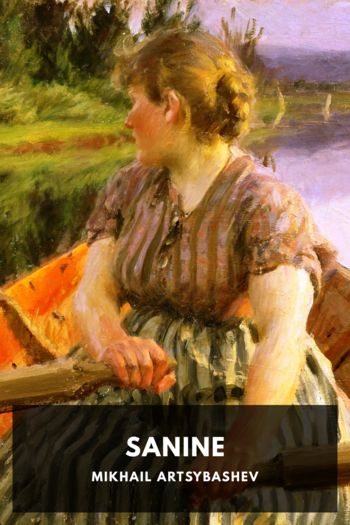
Description
Vladimir Sanine has arrived back to the family home where his mother and younger sister live, after several years away. While deciding what to do with his life, he meets up with a circle of friends and acquaintances, old and new, and spends his time as many carefree young adults do: in a whirl of parties, politics, picnics, and philosophical talk. But the freedoms of early twentieth century Russia are still held back by the structures of historical conduct, and their carefree attitudes erode when put in conflict with society’s expectations.
In Sanine, Artsybashev describes a group of young adults in a time of great uncertainty, with ongoing religious and political upheaval a daily occurrence. A big focus of the critical response when it was published was on the portrayal of sexuality of the youths, something genuinely new and shocking for most readers.
Artsybashev considered his writing to be influenced by the Russian greats (Chekhov, Dostoevsky, and Tolstoy) but also by the individual anarchism of the philosopher Max Stirner. Sanine was originally written in 1903, but publication was delayed until 1907 due to problems with censorship. Even publication didn’t stop Artsybashev’s problems, as by 1908 the novel was banned as “pornographic.” This edition is based on the 1915 translation by Percy Pinkerton.

Description
Affable and honourable, Lord Dawlish is the second poorest peer in England, relying on his income as a club secretary. Claire Fenwick, his beautiful fiancée, will not marry him until he has some money, so he draws up plans to travel to New York and make his fortune. When he unexpectedly comes into an inheritance, he attempts to give it to the person he believes is the more deserving recipient. This, however, proves more difficult than expected.
Sir Pelham Grenville Wodehouse was an English author and one of the most widely read humorists of the twentieth century. After leaving school, he was employed by a bank but disliked the work and turned to writing in his spare time. His early writing mostly consisted of school stories, but he later switched to writing comic fiction, creating several regular characters who became familiar to the public over the years, such as Bertie Wooster and Jeeves.

Description
Although known for her later experiments with style and structure, Virginia Woolf set out in her early novels to master the traditional form. Her second novel, Night and Day, presents itself as a seemingly conventional marriage plot, complete with love triangles, broken engagements, and unrequited affections. Beneath these conventional trappings, however, the book’s deeper concerns are resolutely subversive. The main characters—a quartet of friends and would-be lovers—come together, pull apart, and struggle to reconcile socially-prescribed norms of love and marriage with their own beliefs and ambitions.
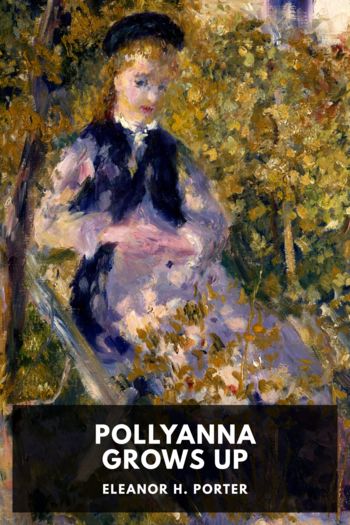
Description
In Pollyanna Grows Up we follow the titular character as she “grows up” through a story told in two connected parts. The first part takes place in Boston when she is age 13, having just been rehabilitated from severe injuries sustained in an automobile accident. As she leaves the hospital, she is sent to stay with a nearby dowager, who has long withdrawn into grief, pining for her lost nephew. Pollyanna is to be her “cure.” After leaving Boston, Pollyanna leaves the country with her Aunt Polly and doesn’t return to Vermont until she is 20 years old.
While in Boston, Pollyanna observes her host’s isolation and depression, which sits in stark contrast with the opulence of her home and her material wealth. Meanwhile, naive, relentlessly positive, literal-minded Pollyanna, often oblivious to the structure of society around her, slowly comes to understand the dire, grinding poverty, isolation, and alienation that turn-of-the-century Boston was also home to. Human connection is a central theme of the book and Pollyanna begins to engage with broader cultural and moral questions of her society before departing the country.
In the second half of the book, Pollyanna acts as host to the friends she made in Boston. As such, she reconnects with them and puts them in touch with her friends and family in Vermont. As a part of growing up, Pollyanna must now address questions of how these relationships might change as her age and social status change. She must reconcile the sense of obligation she feels with her desires, and with the wants and needs of those around her. Old relationships are expanded, and new relationships are formed (or revealed) with each, in the end, more connected to all.

Description
A Portrait of the Artist as a Young Man is Joyce’s first novel, published after the previous success of his short story collection Dubliners. The novel is written in a modernist style, with dialog and narration blending together in a kind of stream-of-consciousness meant to invoke the blurriness of memory.
Joyce originally planned writing a realist autobiographical novel of 63 chapters titled Stephen Hero. He abandoned the attempt halfway through, and refocused his efforts on Portrait, a shorter, sharper work in the modernist style. His alter-ego remained Stephen Dedalus, named after Daedalus, the mythological Greek craftsman and father of Icarus. Portrait was written while he was waiting for Dubliners to be published, a process that took eight years and so frustrated Joyce that he once threw the manuscript of Portrait into a fire, causing his family to run to save it.
The novel closely traces Joyce’s early years. Like his alter-ego Stephen, Joyce was born into a middle-class family and lived in Dublin as they descended into poverty; he rebelled against his Irish Catholic upbringing to become a star student at Dublin University, and put aside thoughts of priesthood or medicine, the other careers offered him, to become a writer. Joyce doesn’t shy away from sensitive topics, presenting the discoveries of youth in all of their physical detail, including Stephen’s teenage visits to prostitutes (which also mirror Joyce’s youth, and were how he probably contracted the suspected syphilis that plagued his vision and tortured his health for the rest of his life), and the homosexual explorations of children at a Jesuit school.
The writing is in the free indirect style, allowing the narrator to both focus on Stephen and present characters and events through his eyes, until the last chapter, where Stephen’s first-person diary entries suggest he’s finally found his voice. As the novel progresses, the syntax and vocabulary also grow in complexity, reflecting Stephen’s own development.
Of Joyce’s three novels, Portrait is the most straightforward and accessible. But it remains just as rich and complex as any masterpiece, with critics across generations hailing it as work of unique beauty and perception.

Description
Like other E. Nesbit stories, The Phoenix and the Carpet was initially published in The Strand Magazine. While The Railway Children or Five Children and It proved more popular, Phoenix has still been adapted into three BBC TV series and a film.
The story picks up some time after the events of Five Children and It. The children are back in London and encounter another ancient, magical creature: this time a noble, beautiful, arrogant, and vain Phoenix. He comes with a magic carpet which the gang uses to go on adventures around the world. Some things don’t go as planned, but there are still opportunities to make others happy.
As a female British author of children stories, E. Nesbit was not a typical early 20th century woman. Described as tomboy during her childhood, she grew up a staunch supporter of democratic socialism in a time when many were crushed under poverty. She was a founding member of the Fabian Society, and dedicated herself to charity work, so much so that she almost ended up in poverty.
Nesbit’s stories continue to fascinate readers. Her dry wit and respect with which she engages children ensures that adults can also enjoy her tales. Her depiction of magic—how it follows rules which must be taught or learned, and the painful consequences when they are forgotten—has influenced the works of other writers such as P. L. Travers, C. S. Lewis, and J. K. Rowling.

Description
Reminiscent of old whaling stories, Four-Day Planet follows the story of Walter Boyd, a scrappy 17-year-old reporter working for his father at the Port Sandor Times. Walt gets tied up in the adventures of the sea-monster hunters on Fenris—a barely-habitable planet with a 2,000-hour day. The prized—and only—commodity on Fenris is tallow-wax, a miraculous material harvested from the dangerous seas of the planet.
While being set in a grand sci-fi universe, the book packs in more about intrigue, betrayal, and the grit required to survive on a backwater planet of the Federation. The book was later re-published as a “two-for-one” with Lone Star Planet (originally titled A Planet for Texans).

Description
Montague Rhodes James was a respected scholar of medieval manuscripts and early biblical history, but he is best remembered today as a writer of ghost stories. His work has been much esteemed by later writers of horror, from H. P. Lovecraft to Steven King.
The stereotypical Jamesian ghost story involves a scholar or gentleman in a European village who, through his own curiosity, greed, or simple bad luck, has a horrifying supernatural encounter. For example, in “ ‘Oh, Whistle, and I’ll Come to You, My Lad,’ ” a professor finds himself haunted by a mysterious figure after blowing a whistle found in the ruins of a Templar church, and in “Count Magnus,” a writer’s interest in a mysterious and cruel figure leads to horrific consequences. Other stories have the scholar as an antagonist, like “Lost Hearts” and “Casting the Runes,” where study of supernatural rites gives way to practice. James’ stories find their horror in their atmosphere and mood, and strike a balance in their supernatural elements, being neither overly descriptive nor overly vague.
This collection includes all the stories from his collections Ghost Stories of an Antiquary, More Ghost Stories, A Thin Ghost and Others, and A Warning to the Curious and Other Ghost Stories.

Description
As the Civil War bears down on a small North Carolina town, a tight-knit community of enslaved men and women is preparing for the coming battle and the possibility of freedom. Into this ensemble cast of characters comes Iola Leroy, a young woman who grew up unaware of her African ancestry until she is lured back home under false pretenses and immediately enslaved. Amidst a backdrop of battlefield hospitals and clandestine prayer meetings, this quietly stouthearted novel is a story of community, integrity, and solidarity.
Frances Ellen Watkins Harper was already one of the most prominent African-American poets of the nineteenth century when—at age 67—she turned her focus to novels. Her most enduring work, Iola Leroy, was one of the first novels published by an African-American writer. Although the book was initially popular with readers, it soon fell out of print and was critically forgotten. In the 1970s, the book was rediscovered and reclaimed as a seminal contribution to African-American literature.

Description
Not only was Hamlet one of William Shakespeare’s most popular works during his lifetime, it is also considered among the most powerful and influential works of world literature. “To be, or not to be,” a line from one of Hamlet’s soliloquies, is one of the most widely known quotes in modern English and has been referenced in countless works of literature, theater, film, and music.
During a dark winter night Horatio and a pair of watchmen encounter a ghost that resembles the late King of Denmark, the father of Prince Hamlet. After failing to converse with the ghost, Hamlet is brought to the site of the encounter. The ghost tells the story of his death. He was murdered by King Claudius, the dead king’s brother and Hamlet’s new stepfather. Hamlet swears to avenge him and kill Claudius.
This Standard Ebooks production is based on William George Clark and William Aldis Wright’s 1887 Victoria edition, which is taken from the Globe edition.

Description
Vladimir Sanine has arrived back to the family home where his mother and younger sister live, after several years away. While deciding what to do with his life, he meets up with a circle of friends and acquaintances, old and new, and spends his time as many carefree young adults do: in a whirl of parties, politics, picnics, and philosophical talk. But the freedoms of early twentieth century Russia are still held back by the structures of historical conduct, and their carefree attitudes erode when put in conflict with society’s expectations.
In Sanine, Artsybashev describes a group of young adults in a time of great uncertainty, with ongoing religious and political upheaval a daily occurrence. A big focus of the critical response when it was published was on the portrayal of sexuality of the youths, something genuinely new and shocking for most readers.
Artsybashev considered his writing to be influenced by the Russian greats (Chekhov, Dostoevsky, and Tolstoy) but also by the individual anarchism of the philosopher Max Stirner. Sanine was originally written in 1903, but publication was delayed until 1907 due to problems with censorship. Even publication didn’t stop Artsybashev’s problems, as by 1908 the novel was banned as “pornographic.” This edition is based on the 1915 translation by Percy Pinkerton.

Description
Affable and honourable, Lord Dawlish is the second poorest peer in England, relying on his income as a club secretary. Claire Fenwick, his beautiful fiancée, will not marry him until he has some money, so he draws up plans to travel to New York and make his fortune. When he unexpectedly comes into an inheritance, he attempts to give it to the person he believes is the more deserving recipient. This, however, proves more difficult than expected.
Sir Pelham Grenville Wodehouse was an English author and one of the most widely read humorists of the twentieth century. After leaving school, he was employed by a bank but disliked the work and turned to writing in his spare time. His early writing mostly consisted of school stories, but he later switched to writing comic fiction, creating several regular characters who became familiar to the public over the years, such as Bertie Wooster and Jeeves.

Description
Although known for her later experiments with style and structure, Virginia Woolf set out in her early novels to master the traditional form. Her second novel, Night and Day, presents itself as a seemingly conventional marriage plot, complete with love triangles, broken engagements, and unrequited affections. Beneath these conventional trappings, however, the book’s deeper concerns are resolutely subversive. The main characters—a quartet of friends and would-be lovers—come together, pull apart, and struggle to reconcile socially-prescribed norms of love and marriage with their own beliefs and ambitions.

Description
In Pollyanna Grows Up we follow the titular character as she “grows up” through a story told in two connected parts. The first part takes place in Boston when she is age 13, having just been rehabilitated from severe injuries sustained in an automobile accident. As she leaves the hospital, she is sent to stay with a nearby dowager, who has long withdrawn into grief, pining for her lost nephew. Pollyanna is to be her “cure.” After leaving Boston, Pollyanna leaves the country with her Aunt Polly and doesn’t return to Vermont until she is 20 years old.
While in Boston, Pollyanna observes her host’s isolation and depression, which sits in stark contrast with the opulence of her home and her material wealth. Meanwhile, naive, relentlessly positive, literal-minded Pollyanna, often oblivious to the structure of society around her, slowly comes to understand the dire, grinding poverty, isolation, and alienation that turn-of-the-century Boston was also home to. Human connection is a central theme of the book and Pollyanna begins to engage with broader cultural and moral questions of her society before departing the country.
In the second half of the book, Pollyanna acts as host to the friends she made in Boston. As such, she reconnects with them and puts them in touch with her friends and family in Vermont. As a part of growing up, Pollyanna must now address questions of how these relationships might change as her age and social status change. She must reconcile the sense of obligation she feels with her desires, and with the wants and needs of those around her. Old relationships are expanded, and new relationships are formed (or revealed) with each, in the end, more connected to all.